Your business operations are only as good as your ability to monitor and control them. For example, manufacturing teams would be lost without a controlling process that lets them measure and improve on their management function.
The process of controlling management is essential for any business to remain viable. When you monitor with software and control the process of your manufacturing, you’re able to see what works and what isn’t working.
What Is Controlling Process in Business Management?
The controlling process in business management is when managers set, measure and refine their business operations and manage cost control.
By using a controlling process, a company can navigate changes to the supply chain, customer demand and other variables that impact a company’s livelihood. It’s a critical task in keeping any business solvent.
Through the process of controlling in management, a company can accurately tell if plans are moving in the right direction and are fully implemented. If those plans aren’t working and take the company off-track, they can right the ship and stay on course.
Project management software helps you measure performance. ProjectManager is software that does this in real time. You can see the difference between your planned and actual effort with ProjectManager’s live dashboard. The dashboard collects production data, automatically crunches the numbers and then displays the result in easy-to-read graphs and charts. Try ProjectManager today for free!
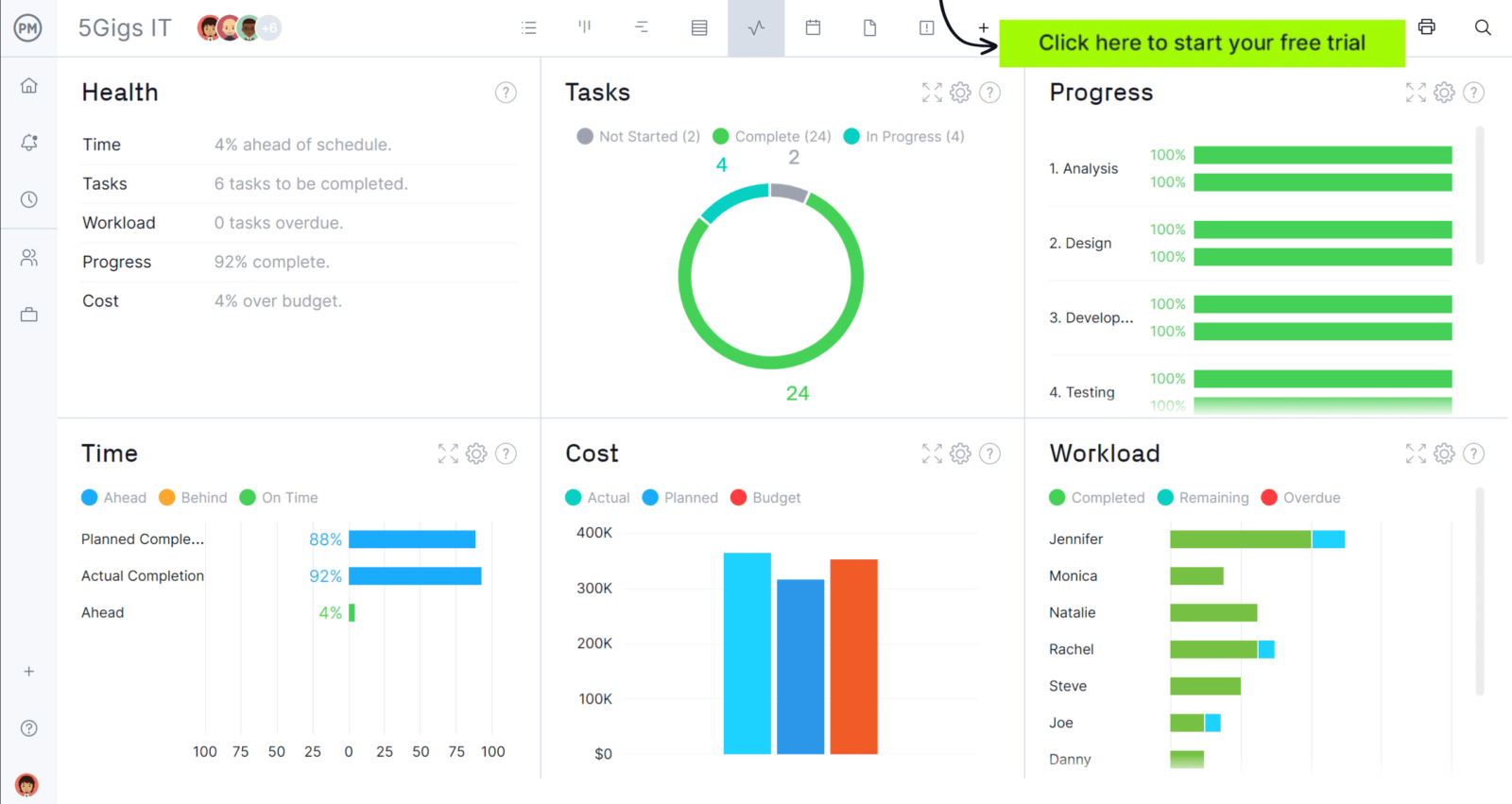
Who Is Involved in the Controlling Process?
A range of individuals and groups are involved in the controlling process, but the specific people involved can vary depending on the company’s size and structure. Usually, management such as the executive team, the CEO and the department managers are involved. They work to set the overall strategic goals and business targets, and are responsible for monitoring their team’s performance.
The finance department, including the CFO and financial analysts, is also involved as they help ensure the controlling process offers relevant and reliable information for strategic decision making and financial reporting. While not directly involved in controlling, employees across departments may contribute to this process by offering data related to their role, following established budgets or providing feedback.
Controlling Process Steps in Business Management
There is a five-step procedure for controlling processes that will help you set, measure and tweak your business activities—whether that’s production, packaging, delivery or another business process.
If you’re not applying a controlling process, then you’re not really managing your business processes. You can’t lead your workforce without controlling the process.
For organizational control that leads to fulfilling your company’s goals and strategic plans, follow these five steps:
1. Set Performance Standards
You need a goal for your business, but you also need guidance for your team to keep them working towards that goal. Without such standards, it’s possible that they’ll move away from the plan, whether intentionally or not.
Standards are like goals tasked to a specific department or team member. They must achieve these standards through cooperation, teamwork and a collaborative effort. To ensure these standards are being met, though, you must-have criteria to measure them by.
By setting up rules you can measure with, you can judge or rate performance to keep the results standard. This helps management understand how production is progressing, and whether it’s on track or needs adjustment. Having standards to base performance on means that work doesn’t have to stop to get a picture of how it’s progressing.
There are two groups of standards: tangible (or specific) and intangible (or abstract). The former is measurable; you can see it and count it. The latter cannot be seen nor counted. A tangible standard would be time, cost, profit, expenditure, output, etc. Intangible standards are a manager’s performance, a worker’s attitude and so forth.
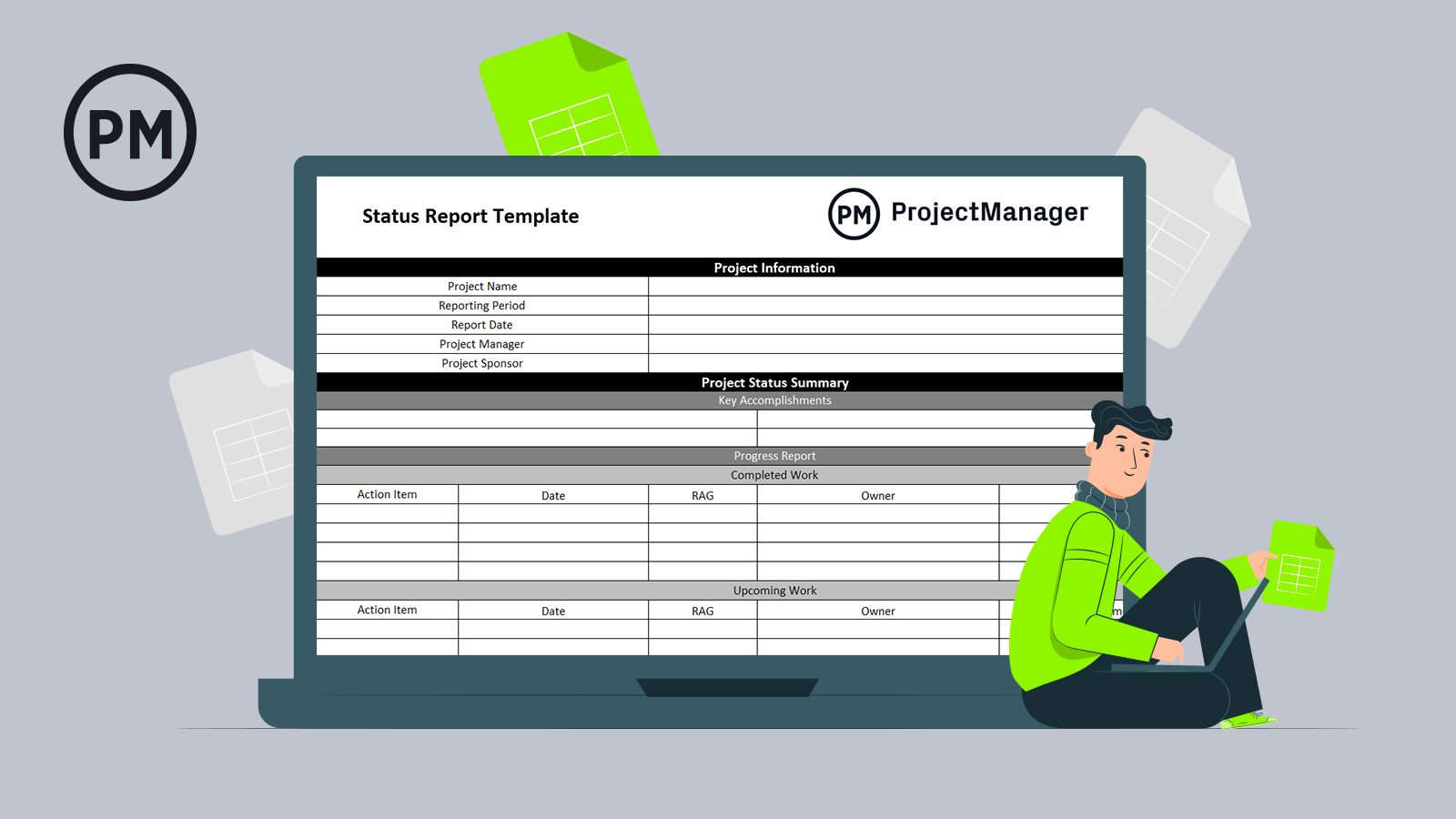
Get your free
Status Report Template
Use this free Status Report Template for Excel to manage your projects better.
2. Measure Performance
Setting a standard makes it possible to measure performance using a control function. Through this measurement of performance, you can quickly catch and correct any deviation from the plan before it goes off-track and runs production into the ground.
Measurements are easier when dealing with tangible standards that can be seen and counted. This is naturally more difficult with intangible standards. By definition, intangible performance is difficult to measure in an information system, as you cannot quantify it.
One way to make up for this shortcoming is by looking at a manager’s performance through the eyes of their team. What is the team attitude like towards their work? Is morale high? How are communications between the team and the manager? Is the team loyal to each other, their manager and the company?
Although these are intangible standards, together they paint a picture of the manager’s performance. All of those questions speak to the ability of the manager to successfully manage their team. Draft the standard for measuring what teams do, what is their expected performance, etc. You can collect this data regularly by reports, whether weekly, monthly, quarterly or yearly.
3. Compare Actual Performance Against Performance Standards
Once you have a baseline for how your teams are performing when manufacturing, packaging, delivering, etc., you can compare the actual to the planned performance and determine the extent of the deviation. This is called variance, or the difference between actual performance and goals. Schedules can be immensely helpful when it comes to analyzing variance.
ProjectManager has online Gantt charts that allow you to set concrete milestones and project phases, so you can see at a glance if you are ahead or behind schedule. Plus, the Gantt updates in real time as your team completes their work. Take a free trial and build a schedule in minutes.

The manager must look at this data and accept or reject the outcome. This depends on the deviation and the impact on the business. If everything is going as expected, that’s great, but it’s more likely that there will be deviation of some sort. It’s up to the manager to determine if that gap is one that can be ignored or acted on.
4. Analyze Deviations
This brings us to the next step: where you analyze data using the acceptable limits. If standards weren’t met, the manager must then figure out whether more control is required—or if maybe, the standard itself should be changed.
If there is a gap between planned and actual performance, the next step is figuring out what is causing it and what the extent of it is. Then, you have to determine how this deviation is impacting the business. If the difference is only a small one, then it’s probably okay to ignore it. But if the gap reflects gains, appointing workers, changing or repairing equipment and other critical issues, it must be addressed. A gap analysis template can help in that decision-making process.
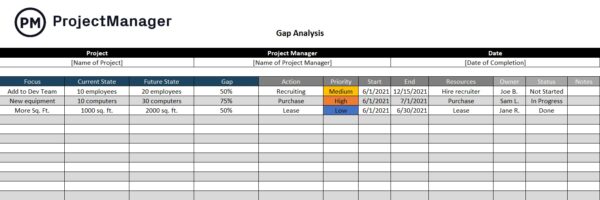
5. Take Corrective Actions
Once you have analyzed the deviation and determined its cause, the manager will have to set up a plan in which corrective measures, critical point control and other means are used to resolve the issue. This is to reduce the deviation and ensure the standard is met. This might involve changes to processes and/or behaviors.
Some situations discovered in a controlling process might require corrective action to save the business, while others might just be a below-standard performance that needs correcting to improve processes and bring production back on schedule. Therefore, actions might be needed immediately because of the urgency.
Corrective actions include a variety of activities. For example, you might change how certain business operations are carried out. However, some operations and performances might not be able to change and may require more resources. For example, hiring more team members might be the solution to correct the deviation you’ve discovered.
It’s important that managers monitor and control the process from start to finish. That includes not only the controlling process but any actions planned to resolve the deviation or reset the standards. An understanding of the controlling process shows if plans are being met and, if not, what actions need to take place in order for them to be met.
How to Get Buy-in From Your Team for the Controlling Process
For the controlling process to be effective, the team needs to buy into it. This often revolves around focusing on communication, transparency and involvement. For example, the top management team can explain why certain controlling measures are put into place and how they benefit the overall business. When team members can understand how their work impacts the bigger picture, they are more likely to understand the importance of their work.
As performance standards are apparent in the controlling process, it’s ideal to share the results openly and honestly. This can help build trust and show those in the business that data is being used constructively. Teams need the right training and support to hit their performance standards. Make sure they have the knowledge and skills to understand the controlling process, any relevant KPIs and how their work contributes to the bottom line. If needed, offer training on software or tools that can help with data collection and reporting.
Templates to Help the Control Process
Project management templates are one of the most helpful tools a project manager can utilize during the control process. Here are a handful that can help.
Download this free quality control template for Excel for a standardized way to establish and maintain production standards. It details quality assurance measures and methods of accountability to ensure the delivery of quality products.
Cost control is integral to the control process. Use this free operating budget template for Excel to forecast revenue and expenses over a period. It helps map out the expected costs for the quarter or year ahead, resulting in a more accurate budget.
Corrective Action Plan Template
If plans aren’t moving in the right direction, a company should take action. Download this free corrective action plan template for Excel to outline and develop the action items that can correct errors, reduce risks and improve processes.
How ProjectManager Helps With the Control Process Steps
ProjectManager is onlind work management software that manages plans and monitors performance in real time to help managers make more insightful decisions. Multiple project views make it easy for hybrid teams to use the tool how they want, no matter where they are, what they do or their level of expertise.
Track Progress on Gantt Charts
Setting performance standards can be done on ProjectManager’s interactive Gantt charts. Milestones can be set, tasks assigned and priority and other tags added to better organize the standards. A baseline is set to capture the plan, which can then be used later to compare the actual performance with the standards and goals set. Then, the manager can share the Gantt with the team and stakeholders.
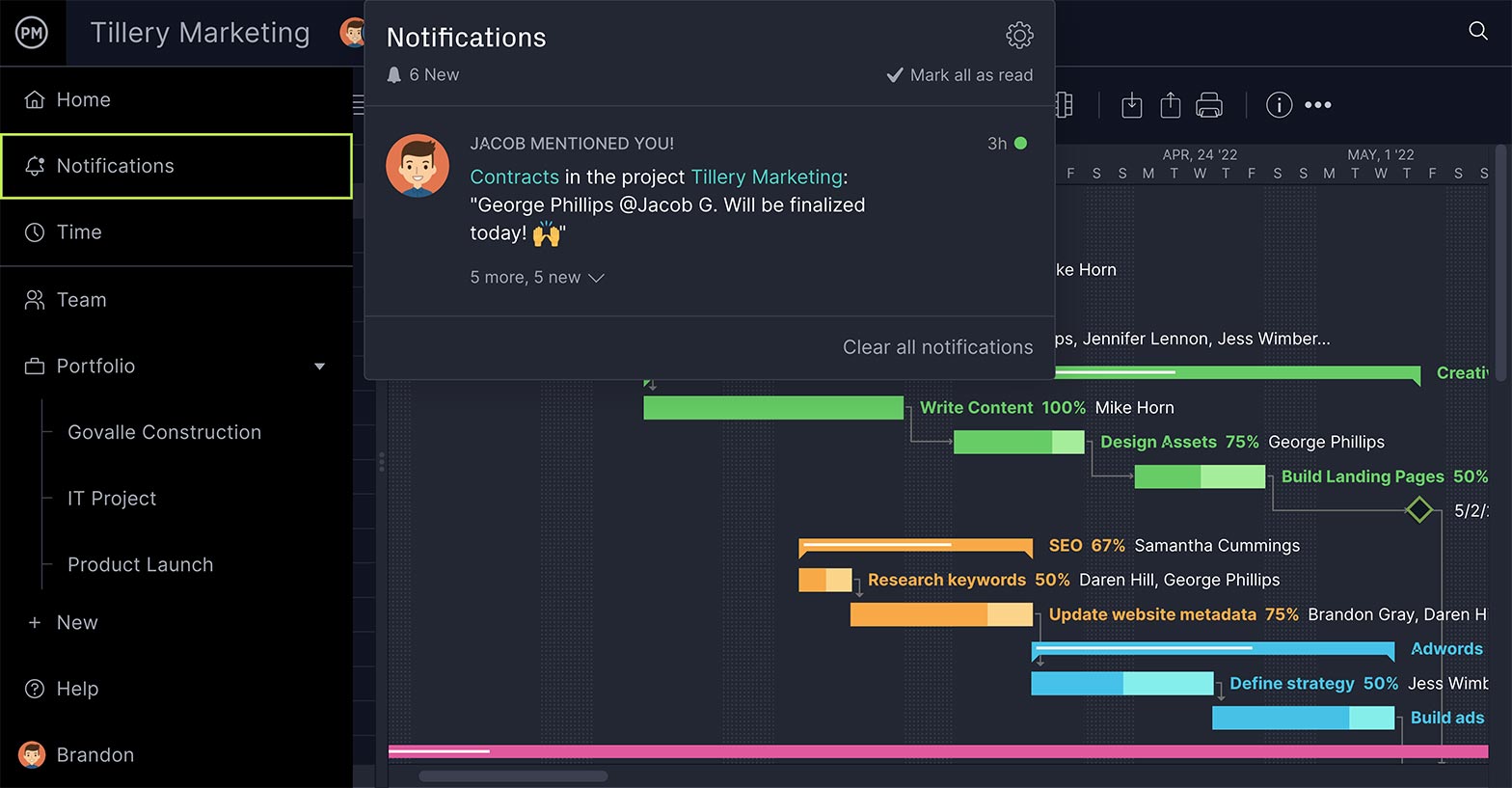
Measure Performance on Dashboards
Measuring actual performance is more accurate with ProjectManager’s cloud-based reporting software. It collects data in real time and displays them on the live dashboard, which also can be shared with stakeholders. Reports are a way to dig deeper into the data. Teams can deliver status reports to update their performance as they execute their tasks, and managers can generate reports on variance, workload, timesheets and more.
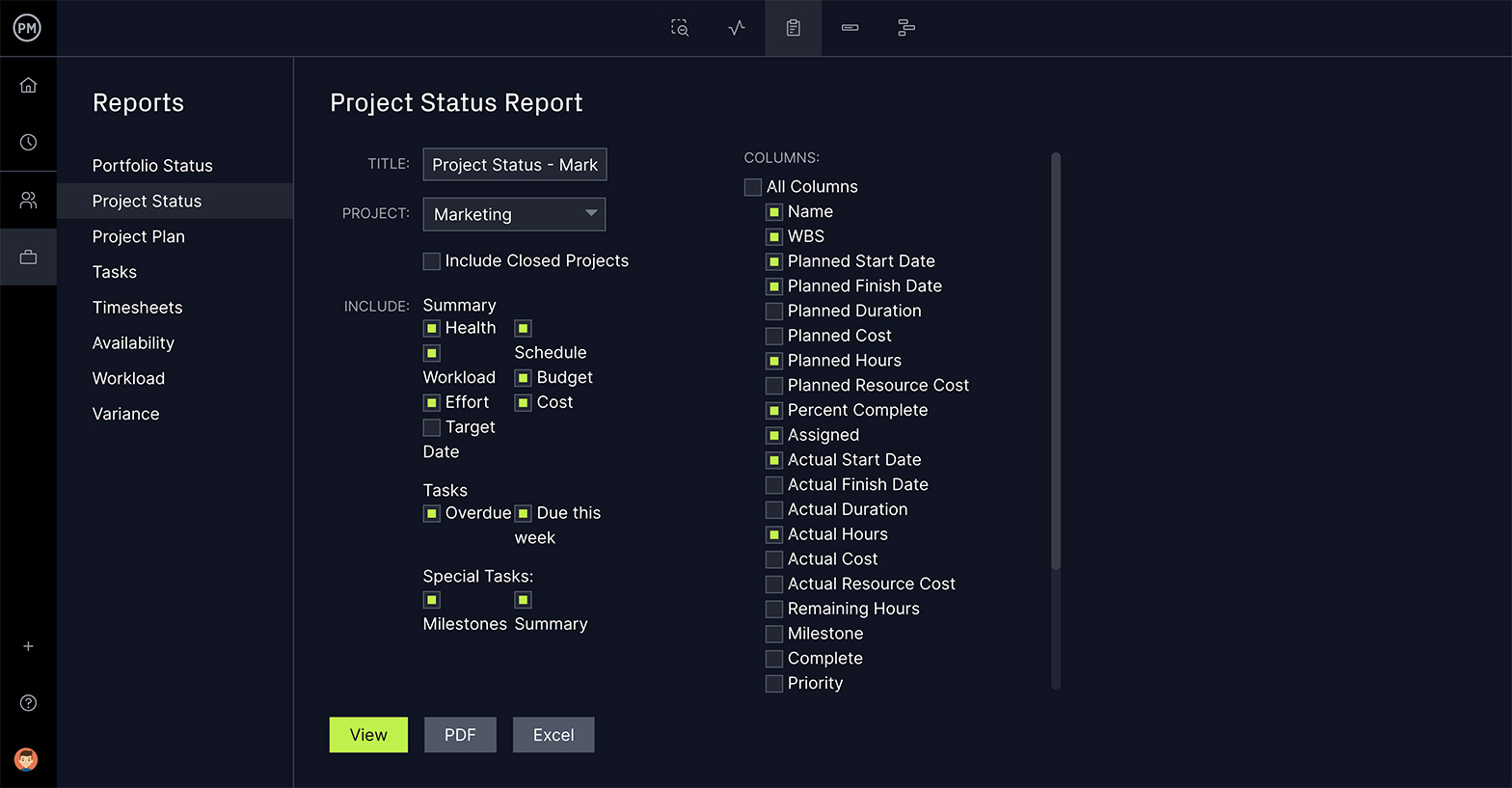
Manage Workload and Reallocate Resources
Resource management tools help you analyze and take corrective action. Workload is one of the standards that can slow down production if too few team members are tasked with too many tasks. ProjectManager’s color-coded chart shows you who is overallocated, and then you can reallocate resources right from the workload chart. Once the workload is balanced, production will increase as will team morale.
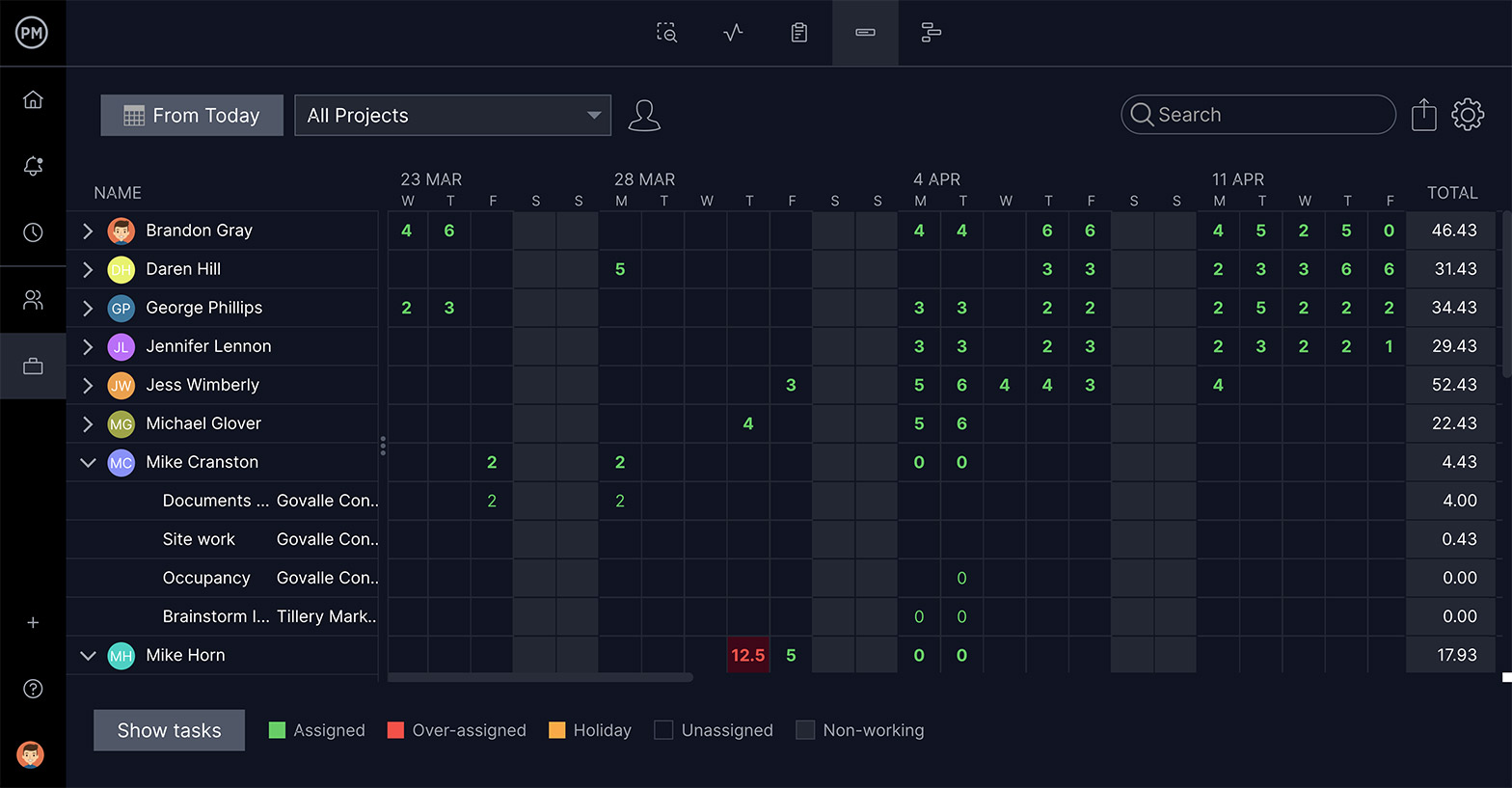
ProjectManager is award-winning software that helps with controlling processes. It has features to help you plan, monitor and report on performance. Multiple project views make it accessible to anyone from management to team members. It’s perfect for hybrid teams looking to improve their work management. Try ProjectManager today!

